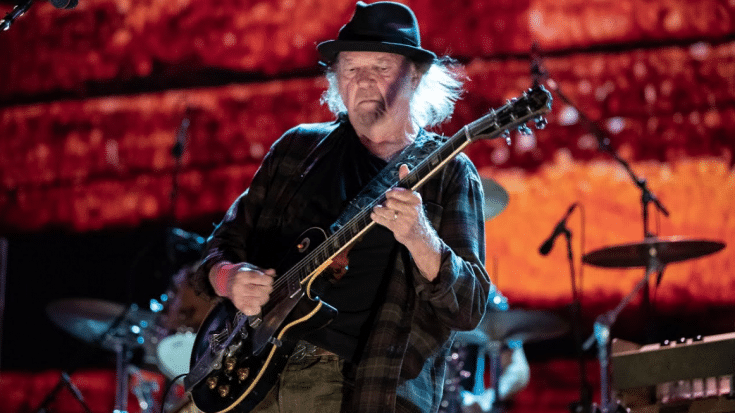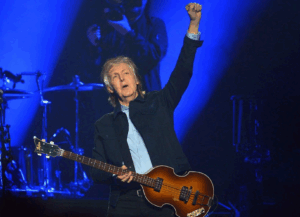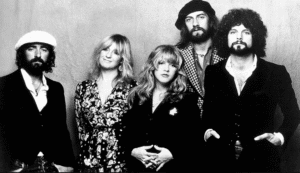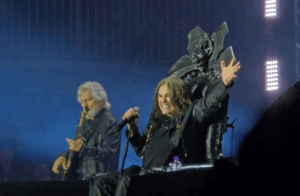5 Albums Where Neil Young Missed the Mark

via Farm Aid / YouTube
Known for his powerful lyrics, distinctive voice, and innovative guitar work, Young has left an indelible mark on both the folk and rock genres. However, even the brightest stars have moments where they don’t shine as brightly, and Neil Young is no exception. This exploration delves into some of the instances where Young’s adventurous spirit perhaps didn’t translate into the universally acclaimed works that fans might have hoped for. Each album listed here showcases a different facet of Young’s boundless creativity, even when the end result didn’t meet the lofty expectations set by his more celebrated works.
“Landing on Water” (1986)
“Landing on Water” represents Neil Young’s embrace of the decade’s synthesizer zeitgeist, a radical detour from the gritty acoustic and raucous electric guitars that defined his earlier reputation. The synthesizers and electronic drums, then en vogue, envelop Young’s naturally poignant songwriting in an icy sheath of technology. This incongruity distances the listener, as the sonic embellishments often feel intrusive rather than integral. Particularly, “Hippie Dream,” a reflective piece about the downfall of counterculture icons like David Crosby, loses its emotive power amidst the mechanical beats and synthesized riffs. The album’s attempt to adapt to contemporary sounds not only alienates long-time fans who cherished Young’s raw edge but also fails to garner new listeners from the synth-pop audience, leaving “Landing on Water” adrift amidst Young’s rich discography. It stands as a testament to an artist willing to experiment but also serves as a reminder that certain experiments may not achieve the desired connection with listeners.
“Everybody’s Rockin'” (1983)
In “Everybody’s Rockin’,” Neil Young ventures into a rockabilly revival, an unexpected deviation that bewildered fans anticipating the gritty folk-rock he’s famed for. The record, a brash response to Geffen Records’ demands for a rock album, pays homage to the ’50s with its pastiche of rock-and-roll standards. However, the juxtaposition of Young’s raw vocals and the album’s crisp digital production feels incongruous, stripping the music of its intended nostalgia. Listeners hoping for a dance through memory lane are instead met with a jarring clash of eras, as Young’s forlorn tunes are dressed in an ill-fitted, modern gloss, distancing the album from the era it aims to celebrate.
“Old Ways” (1985)
Neil Young’s foray into country with “Old Ways” is marked by lush arrangements and polished sheen, contrasting sharply with the stripped-down authenticity country music champions. This glittering surface alienates core fans, who crave the scrappy honesty of Young’s earlier work. Tracks like “My Boy” offer glimpses of genuine connection, yet the album as a whole drifts towards contrivance. Furthermore, Young’s engagement with Nashville conservatism through provocative interviews obscured the music, alienating progressive listeners and critics alike. This uneasy blend of cultivated sounds and political discourse results in an album that neither endears itself to traditional country aficionados nor resonates with Young’s longstanding fan base.
“Are You Passionate?” (2002)
“Are You Passionate?” finds Neil Young joining forces with the legendary soul outfit Booker T. & the M.G.’s, an alliance that promised a fusion of fervor and finesse. Despite such potential, the album is anchored by middling compositions that lack the distinctive spark of either contributor. While “Let’s Roll” captures the national mood of a post-9/11 America with its combative zeal, the remainder of the record meanders through aimless, passion-starved melodies. When Crazy Horse appears on “Goin’ Home,” their signature rugged sound interrupts the monotony, yet it arrives too late, serving to highlight what the rest of the album sorely lacks—a heartfelt, gripping narrative to engage listeners fully.
“Peace Trail” (2016)
The release of “Peace Trail” underscores Neil Young’s relentless creativity and his commitment to political activism, drawing inspiration from the environmental demonstrations at Standing Rock. Unfortunately, despite this compelling backdrop, the album is marred by skeletal compositions and sonic experiments that miss the target, such as the off-putting use of Auto-Tune, which confounds more than it captivates. The music’s direction often feels uncertain, undermining the pressing themes Young intends to champion. While the title track offers a solid anchor with its pointed commentary and classic Young delivery, it cannot buoy the collection’s otherwise floundering message, leaving listeners adrift in a sea of musical and lyrical fragments that fail to coalesce into the potent protest it aims to be.



















